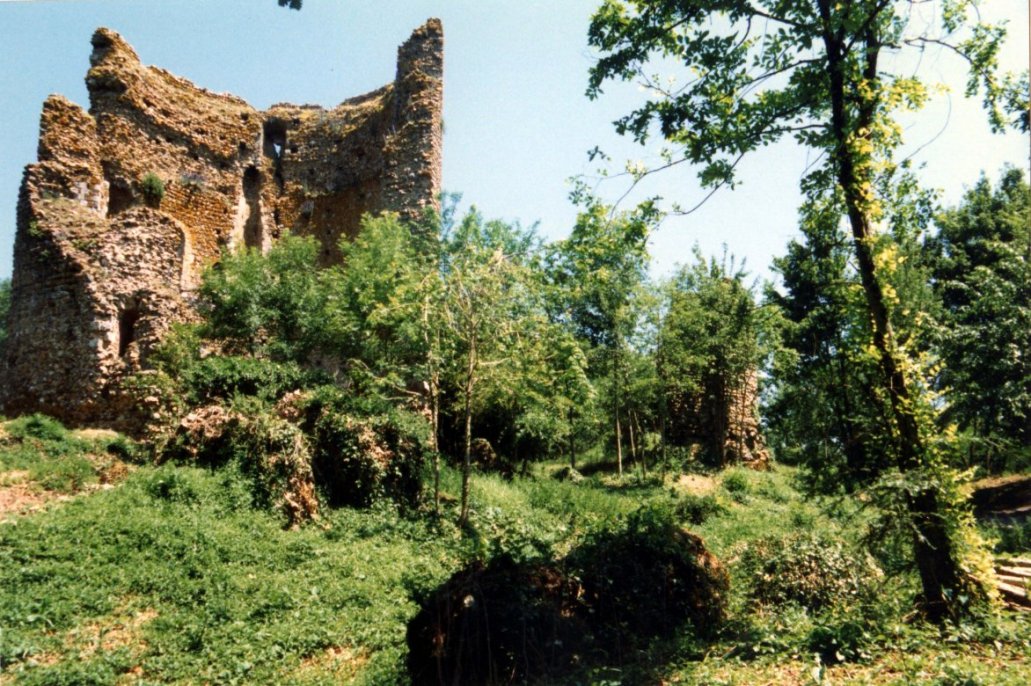Freteval

The castle, guarding the northern borderlands of Blois seems to have
been acquired by Ilbert Lacy of Pontefract during the reign of William I (d.1087). It must then have reverted to Blois after the death of William. It fell to the troops of King Henry II
or his father, for in the late autumn of 1160, after taking nearby
Chaumont castle on the Loir, Henry fortified Freveval castle. A
year later in October 1161 he met King Louis of France at or near the
castle and made a truce with him. Similarly the castle witnessed
the meeting and reconciliation of Henry and Thomas Becket on 22 July
1170. The Angevin domination of the fortress and district was
broken by Philip Augustus in 1187, when he seized both Freteval and
Issoudun. On 4 July 1194, Richard I fought
and defeated King Philip in battle here, where the English king
routed his enemy again and took a rich booty of horses, tents,
siege-engines and much of Philip's treasure while the French king hid
ignominiously in a church. Amongst the other goods seized were
the Capetian's chapel which contained all the French archives and even
a list of all the English king's rebels and those with whom the rebels
had been negotiating. The castle was back in French hands before 1204. During the
Hundred Year's War the castle was attacked in 1418, and although
damaged remained inhabited until at least 1487, the date of the last
coins found in the ruins.
Description
The castle is set on the ridge dominating the
south bank of the Loir and consists of an early circular keep 80' high
and 50' in diameter. In Britain such larger round keeps are described at Pembroke and smaller ones under Llanstephan.
Freteval keep is still standing almost to its full height and,
although split from summit to base in places, still retains many
Romanesque features in its surviving half. It also seems to have
had early fireplaces, like Rochester keep in Kent.
The round keep is surrounded by a shell keep,
similar in layout to the one at Tretower in
Wales. This shell keep seems to have had 4 or 5 D shaped towers
in its enceinte, making it somewhat like Conches in Normandy.
Surrounding the shell on four sides was a near contentric ward
with 5 more D shaped towers and an entrance to the south. Both
these works were set on scarps. To the NW was a bailey or upper
ward, running through the inner ward from the shell, forming a
trumpet shaped enclosure with a rectangular tower to the NE and a hall
block? to the north. The north enceinte of this also formed part
of a large outer ward that surrounded the inner ward. This may
have had 2 D shaped towers in the north wall and one at the southern
apex of the site. There was also a rectangular gatehouse in the
SE curtain. To the north two wing walls ran from the upper court
down to the river Loir and had rectangular gates through which the road
along the south side of the river ran. The outer ward had a deep
ditch and there was a church in the north corner of the outer ward.
Why not join me here and at other French
castles? Information on this and other tours can be found at Scholarly
Sojourns.
Copyright©2019
Paul Martin Remfry

